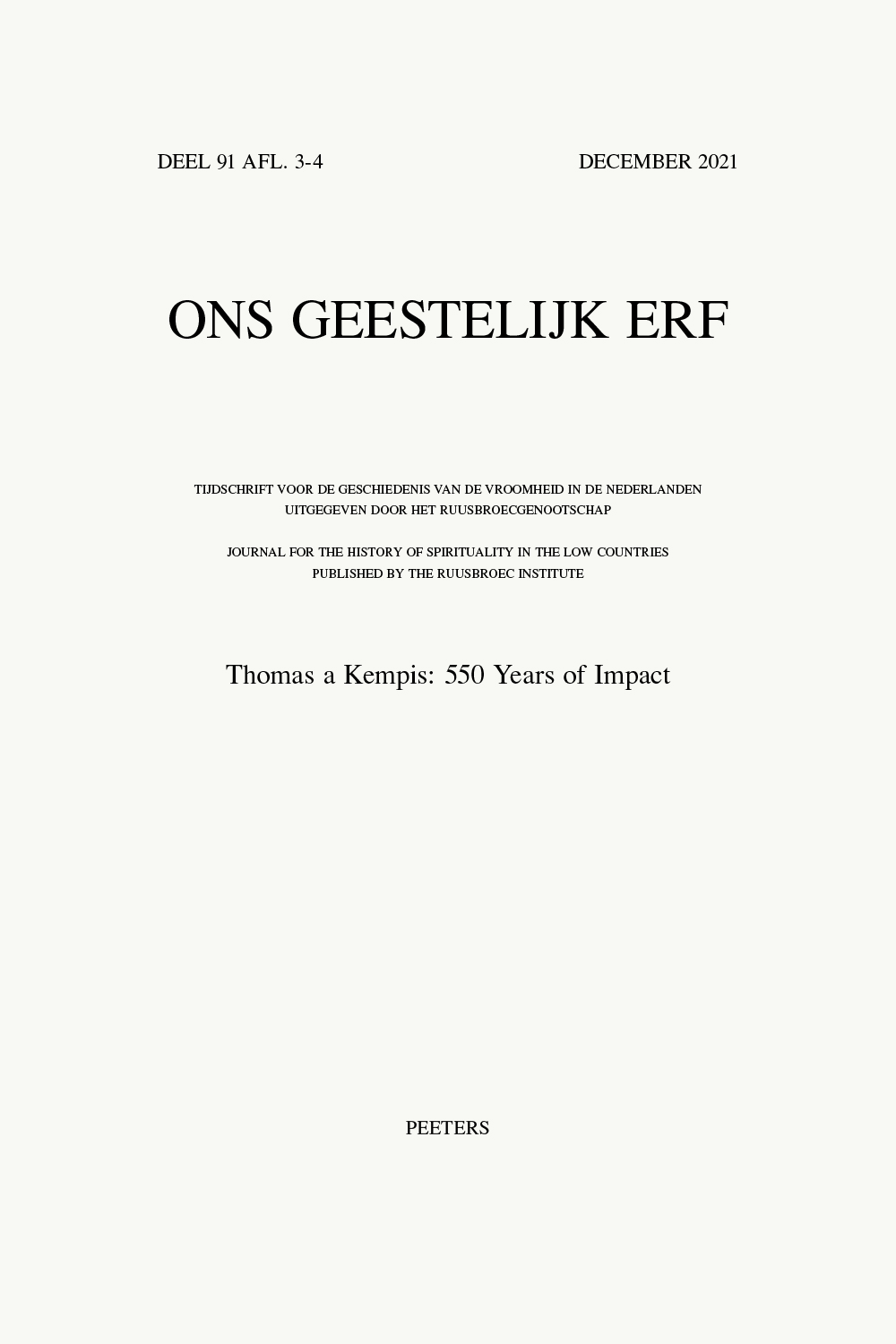next article in this issue  |

Preview first page |
Document Details : Title: Drukken en publieksgroepen Subtitle: Productie en receptie van gedrukte Middelnederlandse meditatieve Levens van Jesus (ca. 1479-1540) Author(s): DLABAČOVÁ, Anna Journal: Ons Geestelijk Erf Volume: 79 Issue: 4 Date: December 2008 Pages: 321-368 DOI: 10.2143/OGE.79.4.2033313 Abstract : From the last quarter of the fifteenth century onward, a large number of Middle Dutch texts containing the life of Christ were printed and dispersed in the Netherlands. In a recent study, an exploration of the previously not widely studied ‘Lives of Jesus’, Koen Goudriaan pointed out a remarkable discontinuity between the circulation of these texts in manuscript and print. Furthermore, the corpus of ‘Lives’ could be divided into two basic textual forms: an ‘epical’ type and a type in which the content of the text is arranged according to liturgical ‘hours’ or ‘points’. Goudriaan suggested that the discontinuity between manuscript and print, and the division in epical and liturgical styles, is related to the intended and actual readership of these texts. This contribution contains a case-study on three different Middle Dutch ‘Lives’ that contain a more or less complete version of the life of Christ: the Tractaet vanden leven ons Heren Jesu Christi, Tboeck vanden leven Jhesu Christi and Dat leven ons liefs heren Jhesu Christi. Concentrating on the printing history, the previous history of the texts and the actual readership of these three ‘Lives’, we can conclude that the discontinuity and the division in two types of texts within the corpus of ‘Lives of Jesus’ are not so much related to the reading public (religious people or laity), but rather to the different and various functions each one of the texts fulfilled within late medieval religious life. |
|


